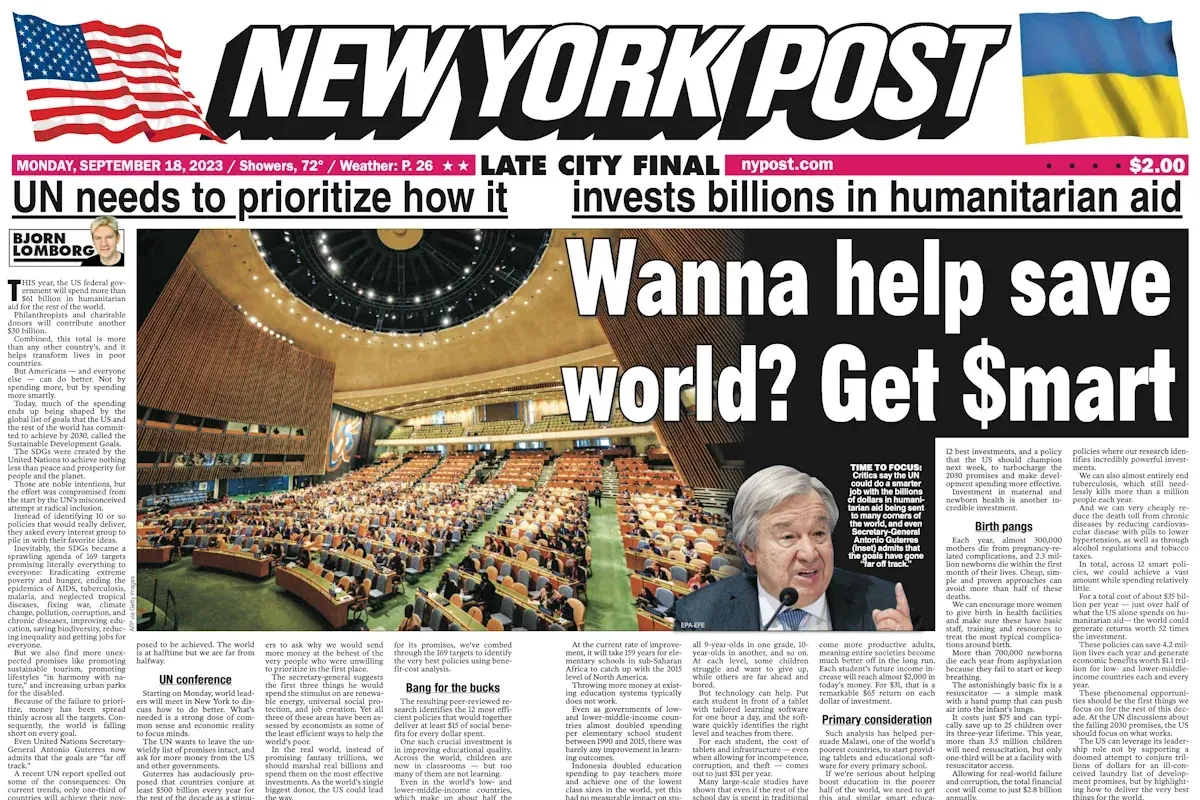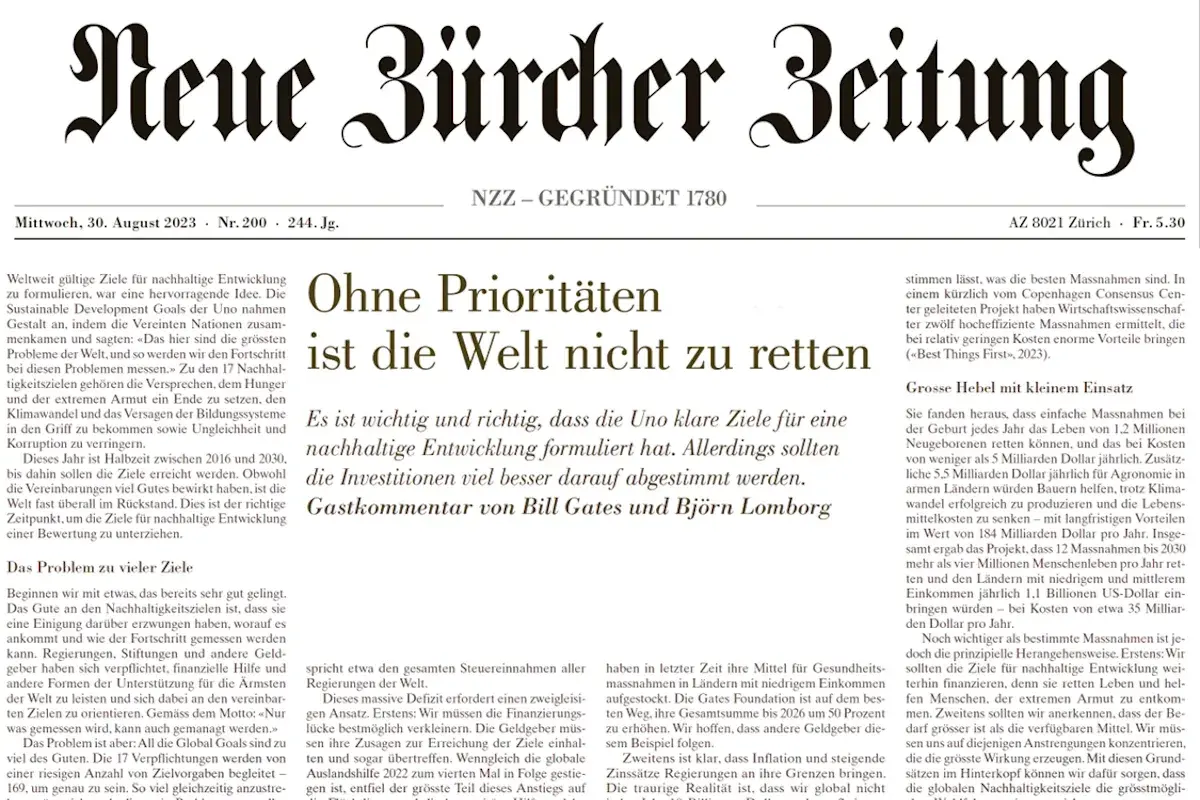Methodology
This project uses benefit-cost analysis to find the most effective policies. At its heart, this approach identifies all the benefits and all the costs in dollars, then divides the two numbers, and the result then tells us how much total social benefit you get for each dollar spent. The result is the benefit-cost ratio or the BCR.
The analyses focus on what we should do beyond what we’re already doing. So, this project doesn’t try to reanalyze everything the world is already spending money on and suggest we start again from scratch, which would be incredibly difficult and pretty useless as a real world exercise. Instead, it asks the more limited and much more relevant question: if we are going to spend a few billion more dollars, where could such additional funds help the most?
This analysis is about how to do more good in the poorer half of the world. It is likely that the need in this region is greater, and the opportunities much cheaper. This project is not about helping the rich world doing better.
Of course, it is impossible to analyze all possible policies. Instead, we take our starting point from a Copenhagen Consensus project that we undertook before the SDGs started. Over the years 2014-15, we considered hundreds and analyzed almost a hundred SDG policies, working with more than fifty teams of economists and several Nobel Laureates in economics. In that project, we found policies that delivered phenomenal returns, which we defined as delivering at least $15 of social benefits per dollar spent. Other policies we looked at delivered good or fair returns and some were just downright poor (delivering less than a dollar of social benefit for each dollar spent).
You can read more about the interventions not quite meeting the BCR above 15 criteria here.




